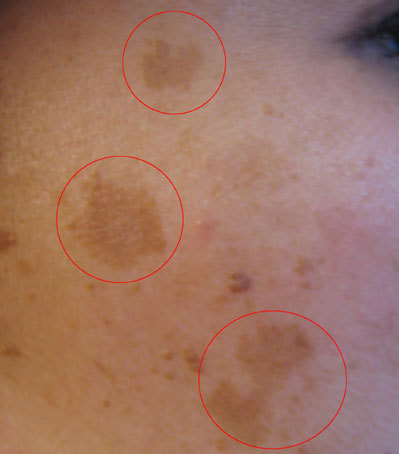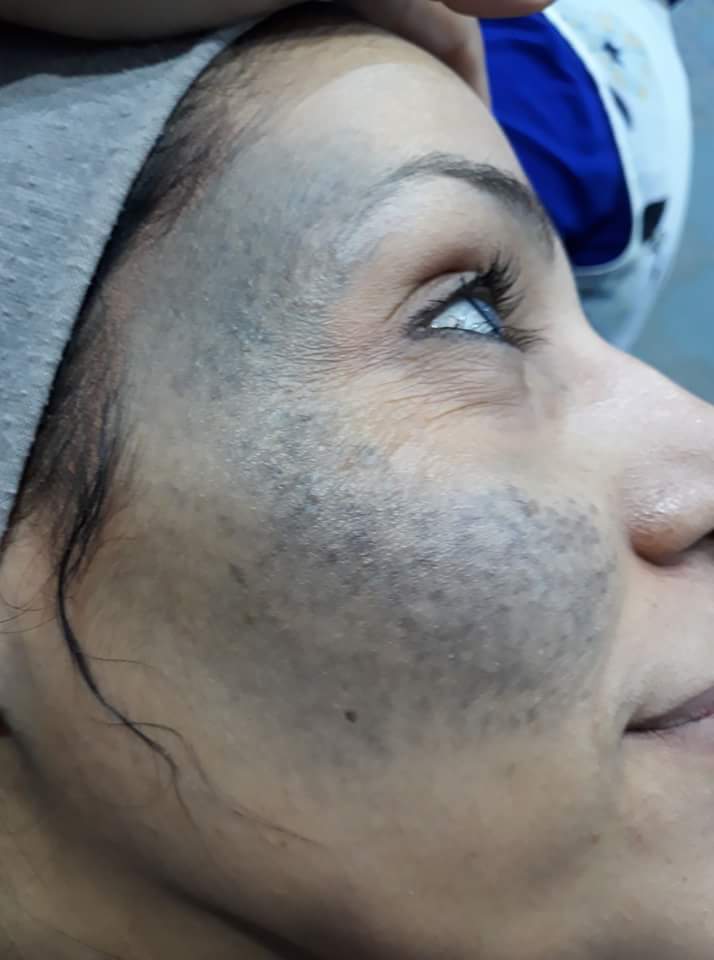The key difference between melasma and hyperpigmentation is that melasma is a hyperpigmentation skin condition characterized by brown or blue-gray patches in the skin, which is mainly due to hormonal changes, while hyperpigmentation is an umbrella term referring to a number of medical conditions that cause patches of skin to become darker in colour than the normal surrounding skin.
Hyperpigmentation occurs when the skin produces more melanin. This may make patches of skin appear darker than surrounding areas. Hyperpigmentation can occur due to various reasons such as sun exposure, acne vulgaris, inflammation, cuts, and lupus. There are different types of hyperpigmentation conditions, which include sunspots, post-inflammatory hyperpigmentation, and melasma.
CONTENTS
1. Overview and Key Difference
2. What is Melasma
3. What is Hyperpigmentation
4. Similarities – Melasma and Hyperpigmentation
5. Melasma vs Hyperpigmentation in Tabular Form
6. Summary – Melasma vs Hyperpigmentation
What is Melasma?
Melasma is a hyperpigmentation skin condition characterized by brown or blue-gray patches in the skin, mainly due to hormonal changes. It is a common type of pigmentation disorder that appears on the skin, primarily on the face. It may also appear on the bridge of the nose, forehead, cheeks, upper lip, forearms, neck, and shoulders. According to the American Academy of Dermatology, only 10% of all cases of melasma occur in men. Women with darker complexions and pregnant women are at a higher risk of developing this condition.

Figure 01: Melasma
The possible causes of melasma include hormonal changes, radiation, antiseizure medications, contraceptive therapy, estrogen/diethylstilbestrol and progesterone, genetics (33% to 55% cases have a family history), hypothyroidism, LED screens, pregnancy, makeup, phototoxic drugs, skin care products, soaps, and tanning beds. The main signs of melasma are light brown, dark brown, and bluish freckle-like spots on the skin. Sometimes, freckles can become red or inflamed. Moreover, melasma normally appears in six locations or a combination of locations on the skin. Melasma is diagnosed through a visual examination and skin biopsy. Furthermore, treatment options for melasma may include application of hydroquinone (lotion, cream, or gel), corticosteroids and tretinoin (lotion, cream, or gel), combined creams (hydroquinone, corticosteroids, and tretinoin), tropical medications (azelaic acid or kojic acid) and medical procedures such as microdermabrasion, chemical peel, laser treatment, light therapy, and dermabrasion.
What is Hyperpigmentation?
Hyperpigmentation is an umbrella term used to cover a number of medical conditions that cause patches of skin to become darker than the normal surrounding skin. These mainly occur due to sun exposure, acne scarring, medications, or inflammation. There are several types of hyperpigmentation. The most common ones are sunspot, post-inflammatory hyperpigmentation, and melasma. Sunspots are also called liver spots or solar lentigines. They are related to excess exposure to sunlight over time. Generally, sunspots appear on hands and face. Post-inflammatory hyperpigmentation is a result of injury or inflammation in the skin. The most common cause for post-inflammatory hyperpigmentation is acne. Moreover, melasma can be caused by hormonal changes which may develop during pregnancy. It appears most commonly on the stomach and face.

Figure 02: Hyperpigmentation
The symptoms of hyperpigmentation may include brown, tan, black spots appearing on the skin with sun overexposure, spots or patches of darkened skin appearing after inflammatory skin conditions like acne, eczema, and large patches of darkened skin. Hyperpigmentation can be diagnosed through physical examination (through Wood’s light) and skin biopsy. Furthermore, treatment options may include lightening creams (hydroquinone creams, licorice extract, N-actylglucosamine, vitamin B-3), face acid (alpha hydroxyl acids, azelaic acid, kojic acid, salicylic acid, vitamin C), retinoids skin care ingredients, chemical peel, laser peel (skin surfacing), intense pulse light therapy, microdermabrasion, and dermabrasion.
What are the Similarities Between Melasma and Hyperpigmentation?
- Melasma and hyperpigmentation are two skin conditions.
- Both occur when the skin produces more melanin.
- They have the same diagnosis procedures.
- They can be treated with skin lightning creams and other medical procedures.
What is the Difference Between Melasma and Hyperpigmentation?
Melasma is a hyperpigmentation skin condition characterized by brown or blue-gray patches in the skin, while hyperpigmentation is an umbrella term used to cover a number of medical conditions that cause patches of skin darker in colour than the normal surrounding skin. Thus, this is the key difference between melasma and hyperpigmentation. Furthermore, melasma is caused by hormonal changes, radiation, antiseizure medications, contraceptive therapy, estrogen/diethylstilbestrol and progesterone, genetics, hypothyroidism, LED screens, pregnancy, makeup, phototoxic drugs, skin care products, soaps, and tanning beds. On the other hand, hyperpigmentation is mainly caused by sun exposure, acne vulgaris, inflammation, cuts, lupus, hormonal changes, reactions to drugs, and medical conditions (Addition’s disease, hemochromatosis).
The below infographic presents the differences between melasma and hyperpigmentation in tabular form for side by side comparison.
Summary – Melasma vs Hyperpigmentation
Melasma and hyperpigmentation occur due to the overproduction of melanin by the skin. Melasma is characterized by brown or blue-gray patches in the skin, while hyperpigmentation is an umbrella term referring to a number of medical conditions that cause patches of skin that are darker in colour than the normal surrounding skin. So, this is the key difference between melasma and hyperpigmentation.
Reference:
1. “Melasma: Causes, Symptoms, Pictures, Treatment.” Medical News Today, MediLexicon International.
2. Pietro, MaryAnn De. “What You Should Know about Hyperpigmentation.” Healthline, Healthline Media.
Image Courtesy:
1. “Melasmablemish” By User:Elord from Wikidocs – (CC BY-SA 3.0) via Commons Wikimedia
2. “Naveus of ota” By Mohammad2018 – Own work (CC BY-SA 4.0) via Commons Wikimedia
ncG1vNJzZmivp6x7pbXFn5yrnZ6YsqOx07CcnqZemLyue9ahmK1lmah6tbTEZpuinpaav6a6wp5km52krLKmuoymnKWZo6Kubq3NnWShsaCav7G1xqacp6yRqbawuo4%3D